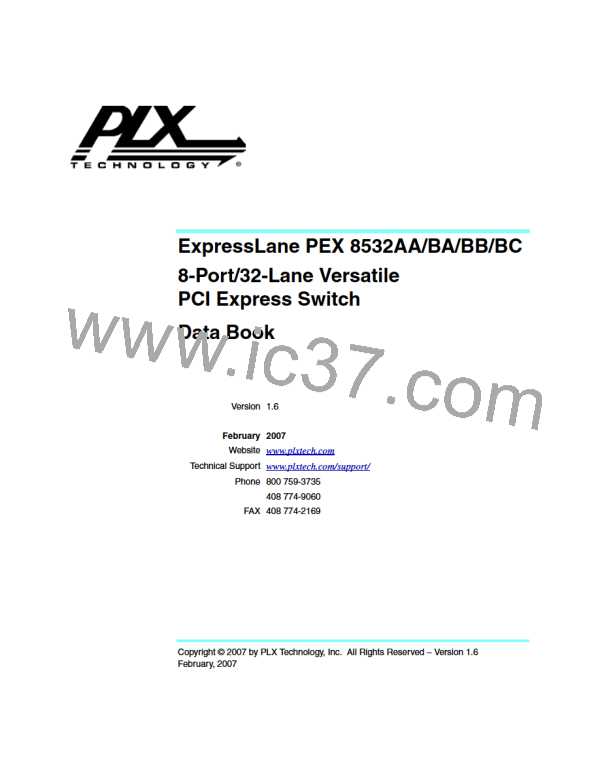Chapter 8 Performance Metrics
8.1
Overview
The PEX 8532 includes features that optimize performance under several application scenarios.
This chapter discusses the four major performance metrics:
• Internal fabric non-blocking nature
• Quality of Service (QoS)
• Sustained link throughput
• Port-to-port latency
These approaches emphasize metric optimization. In general, host-centric applications, with
transactions traveling between a wide upstream port and narrow downstream ports, are more
latency-oriented. In comparison, peer-to-peer applications, where transactions are evenly distributed
among all ports in a switch, are more throughput-oriented. However, achieving best performance
is strongly application-dependent and the above principles are not necessarily always correct.
For example, if the PEX 8532 is linked with a graphics board in a host-centric application, graphics port
throughput becomes the most important performance consideration, not latency. Conversely, if the
traffic pattern in a peer-to-peer application is lightly loaded and bursty, latency can overweigh
throughput, to become the highest performance concern.
Therefore, when tuning performance, it is important to understand the interaction and dynamics among
performance metrics. For example, some tunings, in which the sending of traffic from multiple ingress
ports to a narrow egress port is avoided, improves overall throughput and latency by reducing hot-spot
queuing within the system. Other tunings, such as aggregating traffic from multiple ports into a wider
data path and processing them in a time-multiplexed manner, can optimize throughput at the cost of
slightly longer port-to-port latency.
Once the system dynamics are understood, it is easier to exchange performance metrics against
one another.
ExpressLane PEX 8532AA/BA/BB/BC 8-Port/32-Lane Versatile PCI Express Switch Data Book
Copyright © 2007 by PLX Technology, Inc. All Rights Reserved – Version 1.6
97

 PLX [ PLX TECHNOLOGY ]
PLX [ PLX TECHNOLOGY ]